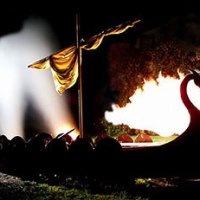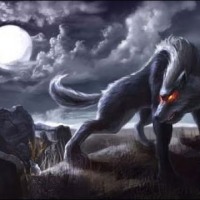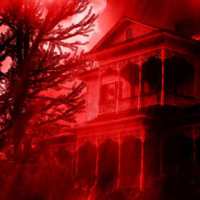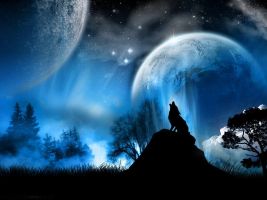At the Mountains of Madness is a novella by horror writer H P Lovecraft, written in 1931 and first published in Astounding Stories. The story is a summation of Lovecraft’s lifelong fascination with the Antartic, beginning from the time when he had followed with avidity reports of the explorations of Scott, Amundsen and others in the early decades of the 20th century. The early parts of Lovecraft’s tale also clearly show the influence of Admiral Byrd’s expedition of 1928-30. The story details the events of a disastrous expedition to the Antarctic continent in September 1930 and what was found there by a group of explorers led by the narrator, Dr William Dyer of the fictional Miskatonic University. Throughout the story, Dyer details a series of previously untold events in the hope of deterring another group of explorers who wish to return to the continent. The novella’s title is derived from a line in The Hashish Man, a short story by fantasy writer Edward Plunkett, Lord Dunsany: “And we came at last to those ivory hills that are named the Mountains of Madness…”.
One inspiration for At the Mountains of Madness (click to read!) may be Lovecraft’s own hypersensitivity to cold, as evidenced by an incident where the writer collapsed in the street and was carried unconscious into a drug store because the temperature dropped from 60 degrees to 30 degrees Fahrenheit (15 degrees to -1 degree Celsius). The loathing and horror that extreme cold evoked in him was carried over into his writing. Among Lovecraft’s other inspirations for the story were the paintings of the Himalayas by Nicholas Roerich, which he had seen only the previous year in New York when the Roerich Museum opened there. He probably did not set the tale in the Himalayas themselves only because they were already becoming well known and because he wanted to create the sense of awe implicit in mountains taller than any yet discovered on the planet. Only the relatively uncharted Antarctic continent could fulfill both these functions. By the 1920s, Antarctica was one of the last unexplored regions of the Earth, where large stretches of territory had never seen the tread of human feet. Contemporary maps of the continent show a number of provocative blanks, and Lovecraft could exercise his imagination in filling them in with little fear of immediate contradiction.
Lovecraft’s most obvious literary source for At the Mountains of Madness was Edgar Allan Poe’s only novel, The Narrative of Arthur Gordon Pym, whose concluding section is set in Antarctica. Lovecraft twice cites Poe’s disturbing and enigmatic story in his text, and explicitly borrows the mysterious cry “Tekeli-li!” from Poe’s work. Another proposed inspiration for Lovecraft’s tale is Edgar Rice Burroughs’ At the Earth’s Core, a novel that posits a highly intelligent reptilian race, the Mahar, living in a hollow Earth. Burroughs’ Mahar even employ a species of servants known as Sagoths, possibly the source of Lovecraft’s Shoggoths – biological entities created to perform any task, assume any form, and reflect any thought. Both stories involve radical new drilling techniques and, more terrifyingly, in both stories humans are vivisected by nonhuman scientists. At the Mountains of Madness also has numerous connections to other Lovecraft stories, including The Nameless City, The Shadow over Innsmouth, The Thing on the Doorstep and The Haunter of the Dark.
Adaptations of the story include a 1930s-style radio drama produced by the Lovecraft Historical Society, a song of the same name recorded by the psychedelic rock group H P Lovecraft and a board game published by Atlas Games. Inevitably, there has been never-ending talk of a feature film adaptation. Evergreen Lovecraft enthusiasts Guillermo del Toro and Matthew Robbins wrote a screenplay based on Lovecraft’s story in 2006, but had trouble getting Warner Bros. to finance the project. My personal favourite of all these various adaptations appeared in October and November 2010, when the BBC broadcast an abridged reading of At the Mountains of Madness in five half-hour episodes performed by Richard Coyle. With top notch narration and eerie background music and sound effects that provide for and set the mood of a disturbingly desolate landscape, this one is well worth seeking out on Audible if you’re inclined to experience the Mountains of Madness for yourself.

















Leave a comment